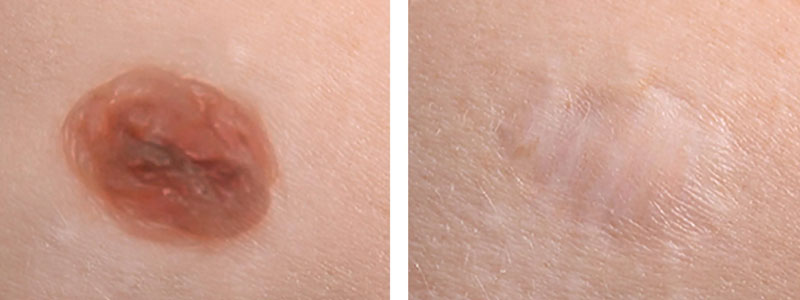Procedures
- Home|
- Mole Removal

Most moles are harmless, but your healthcare provider might recommend removing a mole if it looks suspicious. Moles can also be removed for cosmetic reasons. Whether you have surgical excision or shaving to remove a mole, the procedure is quick and shouldn’t hurt once the area is numb. After the procedure, you may have stinging or burning around the area for a few days.
In a mole removal procedure, your dermatologist shaves or cuts a mole to remove it from your skin. A dermatologist is a medical doctor who specializes in diagnosing and treating diseases of the skin. It’s generally a quick, outpatient procedure that allows your healthcare provider to test the mole for skin cancer. Some people also have moles removed for cosmetic reasons.
Moles often appear in your childhood or teens and range in color from your natural skin tone to pink, brown or black. People with darker hair or skin tend to have darker moles than people with fairer hair or skin. Moles can be flat or raised from the surface of your skin. Your healthcare provider might refer to your mole as a nevus or a group of moles as nevi.
It’s normal to have about 10–40 moles by the time you’re an adult. Some moles grow slowly and may lighten or disappear over time. Most moles are harmless, but you should see your healthcare provider if you have any concerns about the appearance of a mole, or if it changes color or shape, becomes itchy or bleeds.
Sometimes, moles are skin cancer or precancerous. If your mole is itchy, bleeds, isn’t round or oval, or you notice changes in its appearance, contact your healthcare provider.